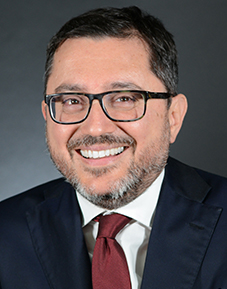Today’s aesthetic requirements force dentists to use immediate rehabilitation procedures in cases of tooth extraction in the front-upper sectors. In these cases, implant treatment is now a valid alternative to traditional fixed prosthesis because it does not require the preparation of the teeth next to the edentulous site, therefore resulting in greater preservation. Furthermore, immediate loading protocols have contradicted the Brånemark dogma, which requires a 6-month submerged healing period for implants inserted in type D3 or D4 bone (upper front sectors). Numerous studies have shown that immediate loading has a long-term efficacy in single-tooth replacement, which forms the basis of the clinical case presented in this article. The report illustrates the implant therapy of a vertical fracture with traumatic aetiology of an element at the same time as the micro-invasive extraction of the tooth, performed by trying to protect the vestibular cortex as much as possible and the mesial and distal bone peaks. For a better aesthetic result, the implant tunnel for inserting the Ø 5.50 mm and 1.13 mm Global prosthesis was prepared, sinking it 3 mm into the basal bone with a torque of 42 Ncm and filling the jumping distance with bovine bone matrix mixed with collagen. The alternate use of drills and osteotomes allowed maintaining the vestibular lump preventing the creation of fenestrations or bone defects.
Within 24 hours, a prosthetization was performed with a provisional crown with direct technique using the Platform Switching restoration concept, screwing a final post with a diameter of 3.8 mm to the implant. The patient was re-evaluated after 12 months to check the healing state of the soft tissues and the bone. Clinical and radiographic controls showed no evidence of gingival recession or aesthetic difficulties. The height of the papillae and of the vestibular and oral gingival margin remained constant. Instead, there was an increase in the distal papillae between the mounting of the final prosthesis and the 12-month follow up. The periodontal parameters showed that there was no bleeding on probing and the probing was always below 3 mm. The radiography showed minimal bone reabsorption even after the 12-month follow up. The ZirTi surface along the entire length of the implant and the coronal micro-grooving seemed to affect the bone maintenance. Therefore, the aesthetic result was as expected and remained constant over time. The elementary surgical and prosthetic technique made it easy to reproduce the method. The micromechanical qualities (ZirTi surface) and the macromechanical qualities of the Global implant make it resistant to micro-movements, which are detrimental for the long-term stability of the bone-implant interface, making it possible to load the final prosthesis after 2 months of insertion. The early interception of the fracture, the presence of a thick gingival biotype, the morphology of the implant platform, the use of the platform-switching concept and the use of a final abutment on the first day of loading are all extremely important conditions for maintaining the bone and gingival architecture in the long term and, consequently, the aesthetics.


